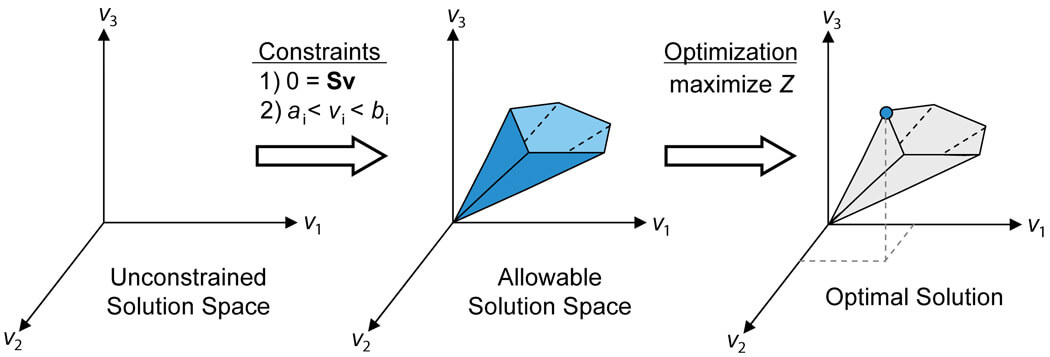Flux balance analysis is a widely used methodology for the study of biochemical networks, and it calculates the flow of metabolites through this metabolic network. With the rapid development of high-throughput technologies, more metabolic models are applicable in FBA. Unlike traditional simulation methods that rely on accurate kinetic data, FBA is developed based on the principle of conservation of mass in networks, and it uses random matrices and biologically relevant objective functions to determine the optimal reaction flux distributions. In recent years, FBA has been widely used to analyze genome-scale reconstructions of several organisms, and to analyze the effects of perturbations, such as gene deletion or drug inhibition in silico. Therefore, FBA has shown great potential for genome-scale based constraint models in building and testing hypotheses as well as guiding experiments. Creative Proteomics can utilize FMA methodology to predict the intracellular fluxes in the central carbon metabolism in silico.
What is FBA?
FBA is a method for calculating the distribution of metabolic fluxes at the steady state in a system that will satisfy constraints on input and output fluxes for a given network structure. Therefore, FBA is also called constraint-based model. FBA is a commonly used linear optimization method in which a specific objective function is optimized and mass balance and enzyme capacity constraints are used to limit the allowable functional states. The use of FBA requires a stoichiometric model of the metabolism network and the appropriate definition of the cellular objectives.
Application of FBA
- Growth rate simulation prediction
- Maximization of secondary metabolites
- Microbial lethality studies
- Antibiotic development
- Metabolic analysis of specific tissues or specific stages of development in plants and animals
 Figure 1. Formulation of an FBA problem. (Orth, J, D.; et al. 2010)
Figure 1. Formulation of an FBA problem. (Orth, J, D.; et al. 2010)
Our Services
Creative Proteomics has developed a novel metabolic flux analysis platform to provide flux balance analysis (FBA) service in a competitive fashion. We can offer a wide range of services to support all research and development activities.
Creative Proteomics FBA Workflow
- Genome-scale metabolic network reconstruction
- Mathematical representation of metabolic reaction and constraints: We use numerical matrices to represent the metabolic networks. The representation is a tabulation, in the form of a numerical matrix, of the stoichiometric coefficients of each reaction. These stoichiometries impose constraints on the flow of metabolites through the network
- Based on the assumption of steady-state, a linear equations (i.e., constraints) based on mass balance can be obtained
- Define the objective function
- Calculate the flow distribution and the corresponding objective values: 16, 0s to maximize or minimize an objective function. And optimization of such a system is accomplished by linear programming
 Figure 2. The conceptual basis of constraint-based modeling and FBA. (Orth, J, D.; et al. 2010)
Figure 2. The conceptual basis of constraint-based modeling and FBA. (Orth, J, D.; et al. 2010)
Features of Our MFA Platform
- Developed based on the most updated knowledge of biology, bioinformatics and software development
- Widely applicable to a wide range of metabolic system
- Professional bioinformatics teams & personalized bioinformatics analysis services.
- Advanced instrument platform
- Integrated quantitative methodologies and comprehensive solutions for metabolomics
Based on high-performance quantitative techniques and advanced equipment, Creative Proteomics has constantly updating our metabolic flux analysis platform and is committed to offering professional, rapid and high-quality services of flux balance analysis (FBA) at competitive prices for global customers. Our personalized and comprehensive services can satisfy any innovative scientific study demands, please contact our specialists to discuss your specific needs. We are looking forward to cooperating with you!
Reference
- Orth, J, D.; et al. What is flux balance analysis?. Nature Biotechnology. 2010. 28(3): 245.